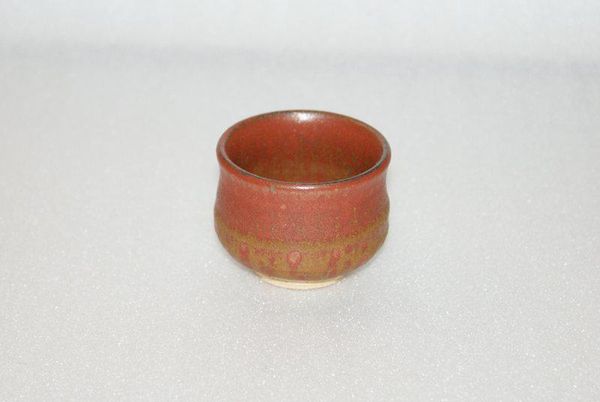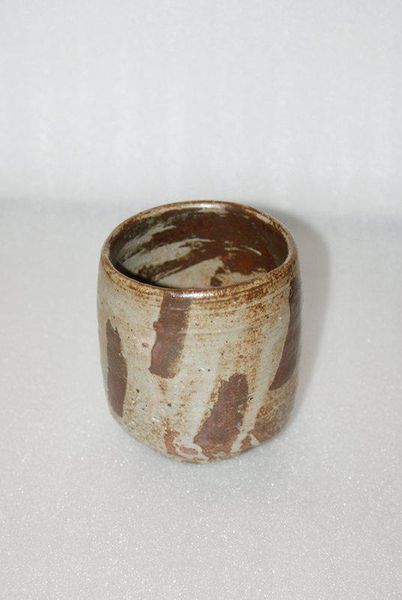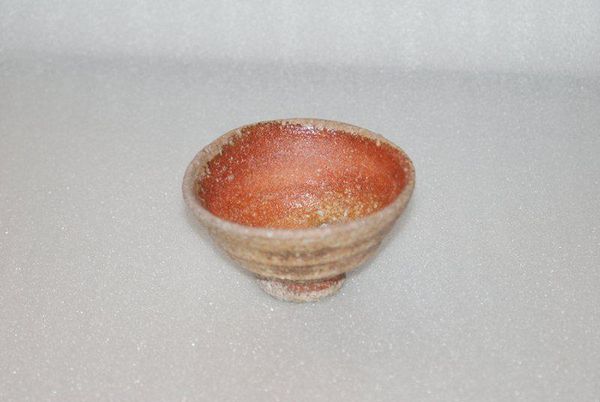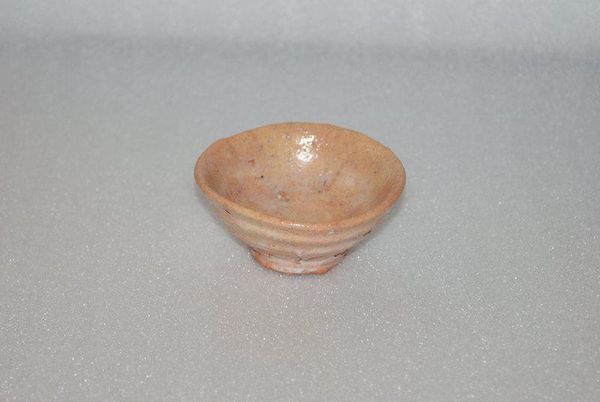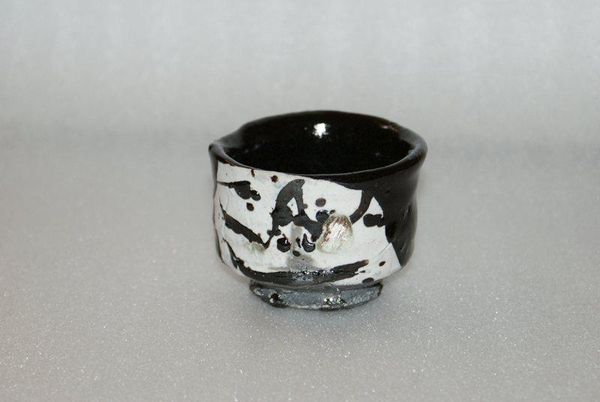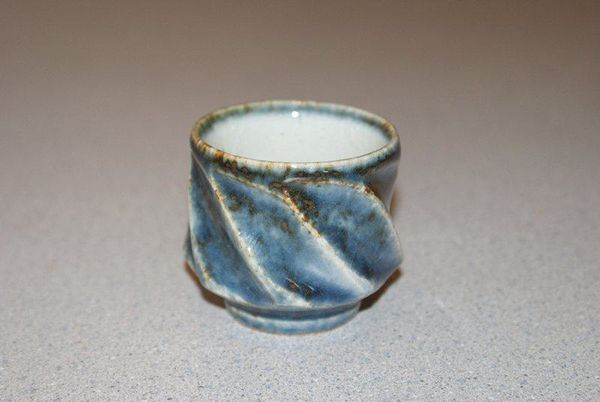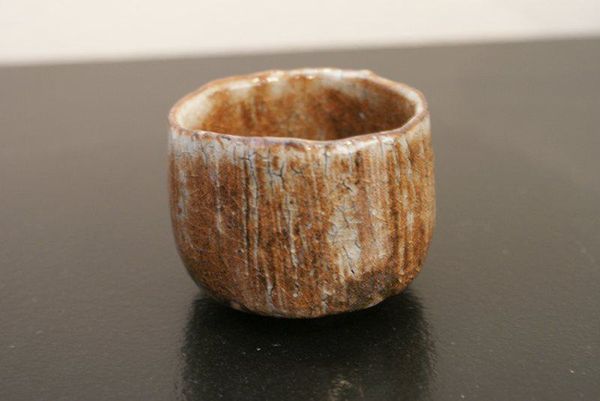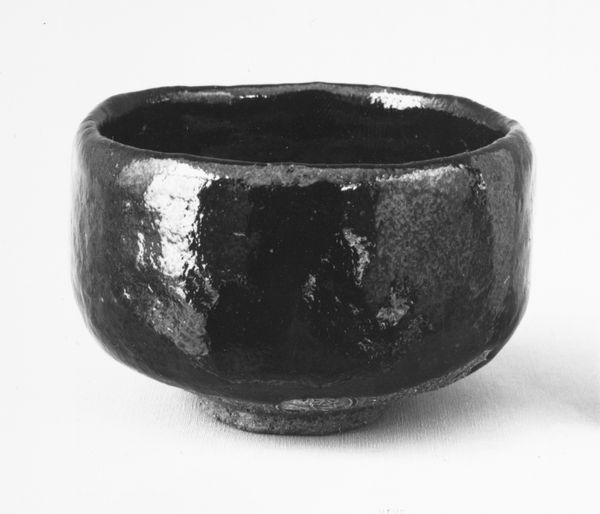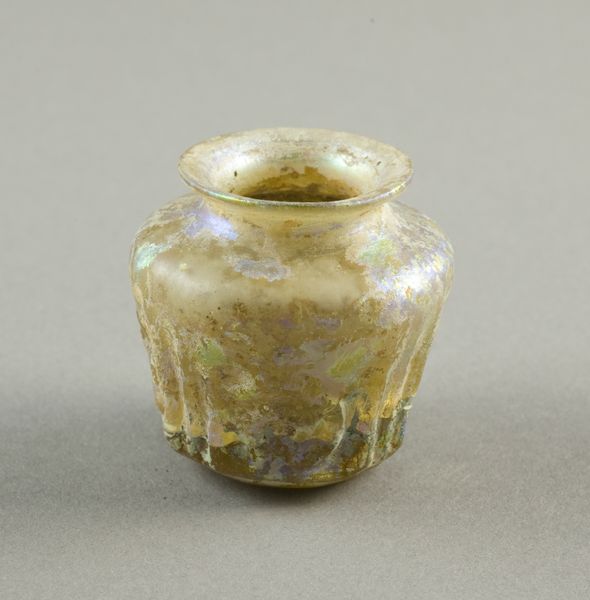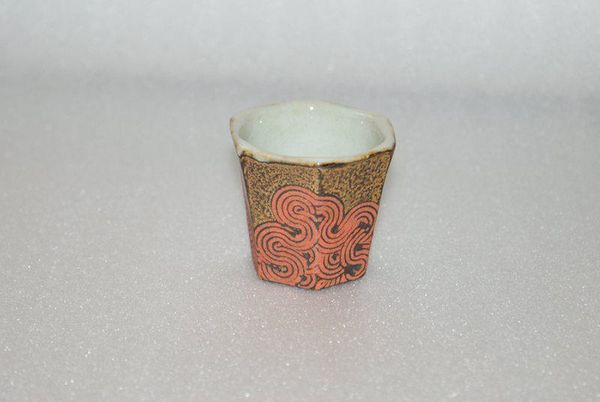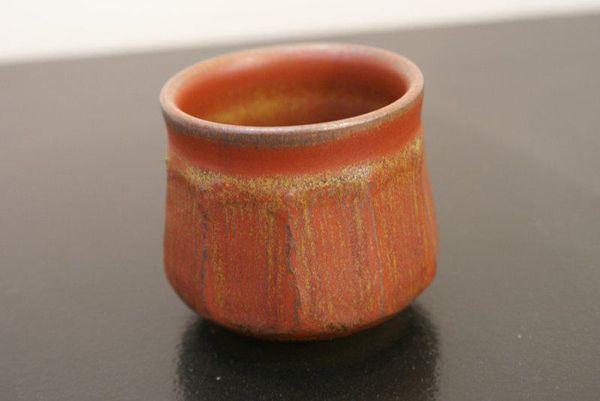
ceramic, earthenware
#
asian-art
#
ceramic
#
japan
#
earthenware
#
stoneware
#
ceramic
Dimensions: 2 3/8 × 2 5/8 × 2 11/16 in. (6.03 × 6.67 × 6.83 cm)
Copyright: No Known Copyright
Editor: Here we have a Sake cup, also known as a guinomi, crafted around the early 21st century by Okamoto Sakurei. It's made of ceramic earthenware. I'm immediately drawn to its simple, almost rustic feel. How would you interpret this work? Curator: It whispers of ancient traditions, doesn’t it? Notice the deliberate imperfections. What do they evoke for you? They point towards *wabi-sabi*, an aesthetic philosophy rooted in Zen Buddhism, one that embraces transience and imperfection. The cup itself becomes a symbol, holding not just sake but centuries of cultural memory. Editor: So the rough texture and the uneven glaze are actually intentional? I wouldn't have guessed! Curator: Precisely! Think of how the tea ceremony elevated the everyday act of drinking tea into a profound ritual. This sake cup does something similar, investing a commonplace object with meaning, with history. Do you see how the form itself speaks of ritual and connection? Editor: I see what you mean. It’s not just a cup; it's a vessel of shared experience. So, it embodies the spirit of Japanese aesthetics, emphasizing simplicity and naturalness, rejecting artificiality, right? Curator: Absolutely. Consider how this object might be experienced. The weight in your hand, the way the sake touches your lips. These elements connect to larger cultural ideas around ritual, humility, and respect. Even the glaze, running like a mountain stream, invites contemplation. It becomes a tiny landscape to get lost in! Editor: I’ll definitely remember to look for symbolism in everyday objects going forward. Thanks! Curator: It's everywhere. And the more we explore, the richer our experience becomes.
Comments
No comments
Be the first to comment and join the conversation on the ultimate creative platform.
